#footage for rotoscoping
Explore tagged Tumblr posts
Text
Honestly the best way for me to learn stuff about new software is as-needed. If I try to watch a dozen tutorials or in-depth guides I zone out, but when I really want to do something, that's one a single specific guide will help
anyways I learned rotoscoping for a yippee joke
#sassy edits#only xenoblade 3 fans will get the joke#i was trying to figure out how to do the fancy cutout cropping because i know adobe never let me do that#but resolve can#kinda weird it's called rotoscoping but#i braved the fusion tab and realized oh. it's like nodes in blender. i kinda know about that#anyways gimme a YIPPEE#also reminder this is a wip and i'll probably make changes whenever i get around to finishing the video#it's been so long but bare with me there's a lot of footage and life is stupid
2 notes
·
View notes
Text

woops never posted this, but got @spaghetti-aldente 's OC Cor in an art trade and knew I had to rotoscope him performing this scene from Phantom of the Paradise. Not as fancy as I'd like, I forgot about his wings until the literal last minute and had to free ball it but I do love the results! If you haven't seen PotP, you should it's a mashup of Phantom of the Opera, Faust, as a 70's rock opera by the muppet music guy.
#arky draws junk#the dream was to have enough footage to have music to but rotoscoping is . so tedious#and yet i love it so#probably not the best quality for tunglr but i didn't make him for YOU#spaghetti has the high res that's all that matters
15 notes
·
View notes
Text
Cab Calloway - Minnie the Moocher 1931
"Minnie the Moocher" is a jazz-scat song first recorded in 1931 by Cab Calloway and His Orchestra, selling over a million copies and was the biggest chart-topper of that year. "Minnie the Moocher" is most famous for its nonsensical ad libbed ("scat") lyrics. In performances, Calloway would have the audience and the band members participate by repeating each scat phrase in a form of call and response, eventually making it too fast and complicated for the audience to replicate. The song is based lyrically on Frankie "Half-Pint" Jaxon's 1927 version of the early 1900s vaudeville song "Willie the Weeper".
"Minnie the Moocher" was inducted into the Grammy Hall of Fame in 1999, and in 2019 was selected for preservation in the National Recording Registry as "culturally, historically, or aesthetically significant" by the Library of Congress.
In 1978, Calloway recorded a disco version of "Minnie the Moocher" on RCA Records which reached number 91 on the Billboard R&B chart. "Minnie the Moocher" has been covered or simply referenced by many other performers. Its refrain, particularly the call and response, is part of the language of American jazz. At the Cab Calloway School of the Arts, which is named for the singer, students perform "Minnie the Moocher" as a traditional part of talent showcases.
In 1932, Calloway recorded the song for a Fleischer Studios Talkartoon short cartoon, also called Minnie the Moocher, starring Betty Boop and Bimbo, and released on March 11, 1932. Calloway and his band provide most of the short's score and themselves appear in a live-action introduction, playing "Prohibition Blues". The thirty-second live-action segment is the earliest-known film footage of Calloway. In the cartoon, Betty decides to run away from her parents, and Bimbo comes with her. While walking away from home, Betty and Bimbo wind up in a spooky area and hide in a hollow tree. A spectral walrus—whose gyrations were rotoscoped from footage of Calloway dancing—appears to them, and begins to sing "Minnie the Moocher", with many fellow ghosts following along, during which they do scary things like place ghosts on electric chairs who still survive after the shock. After singing the whole number, the ghosts chase Betty and Bimbo all the way back to Betty's home. In 1933 another Betty Boop/Cab Calloway cartoon with "Minnie the Moocher" was The Old Man of the Mountain.
Calloway performed the entire song in the movie Rhythm and Blues Revue (1955), filmed at the Apollo Theater. Much later, in 1980 at age 73, Calloway performed the song in the movie The Blues Brothers. Calloway's character Curtis, a church janitor and the Blues Brothers' mentor, magically transforms the band into a 1930s swing band and sings "Minnie the Moocher" when the crowd becomes impatient at the beginning of the movie's climactic production number.
"Minnie the Moocher" received a total of 71,1% yes votes!
youtube
1K notes
·
View notes
Text
Dungeon Meshi episode 21, being heavily dialogue-driven, was pretty straightforward animation-wise and let Ryoko Kui's stunning art speak for itself for the most part, but that doesn't mean that there aren't still some GENERALLY-INSIGNIFICANT-DETAILS-TO-SCRUTINIZE-AT-ARGUABLY-UNNECESSARY-LENGTH.
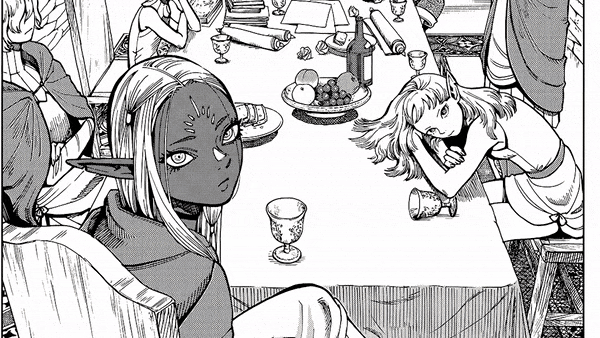
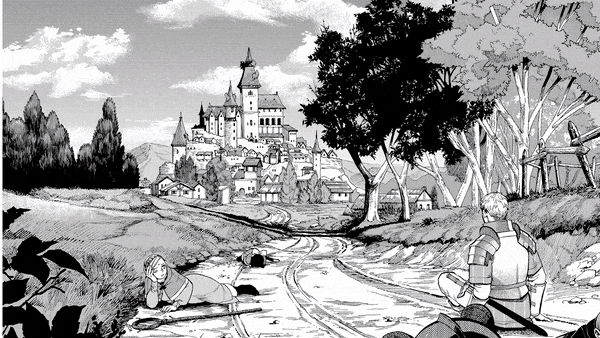
There was a strong emphasis on hands in this episode, particularly the second half, starting with this cut of Laios resting his on the Minotaur's snout.
The animators have taken this simple little panel (on the right) from the manga (btw, people who know more about this than I do, is there a name for this type of panel, which in film would be called an "insert shot"?)
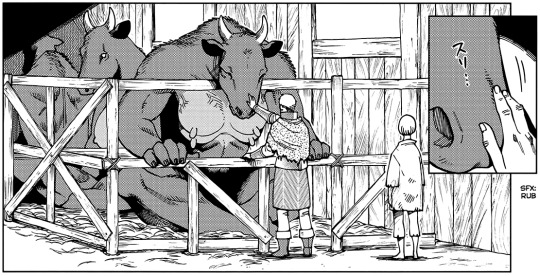
and turned it into this highly detailed tracking shot that heightens the emotional impact of this moment for Laios. It feels very similar to the shot of Kabru bringing a piece of fish to his mouth that introduced him to the series!
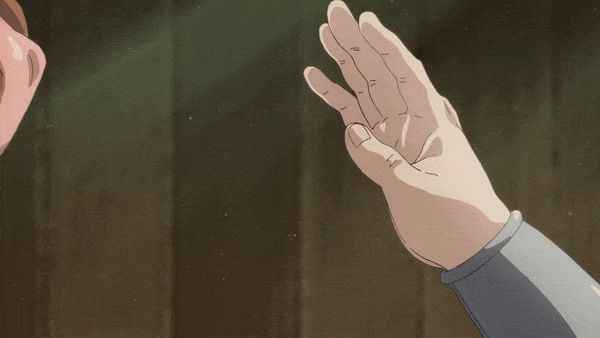

The theme comes up again when Laios does a little bit of blair-witching in the corner after being rejected by house-kitty-pilled Izutsumi,

and once again a few seconds later with this added close-up of Marcille's hand when she tries to read the magical aura of the area.
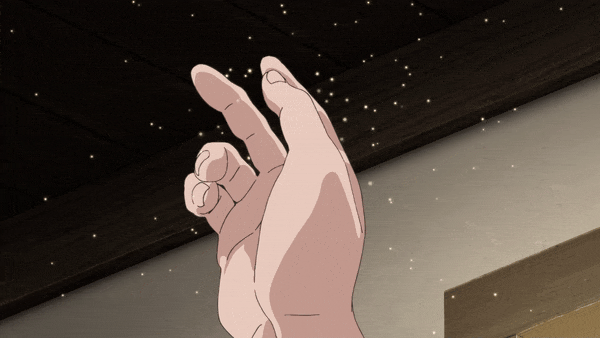
This one clearly makes heavy use of reference footage, to the point that it almost looks rotoscoped until you notice little details like this line that warps unrealistically at the heel of her palm.
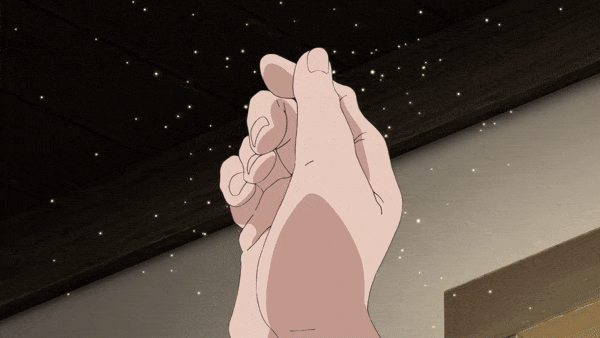
But with smooth, realistic motion like this, little details like that are much less important than the overall feeling of authentic shape and movement. This can be seen in a lot of Masaaki Yuasa's work, which often favors consistent motion and more frames over super polished individual drawings. Here's a thematically appropriate cut from Ping Pong for example:
(This one might actually be rotoscoped, I'm not sure)
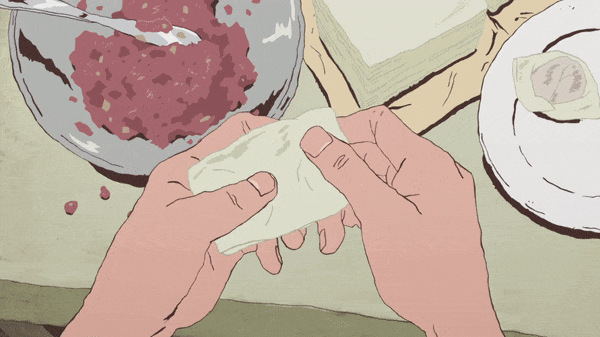
If you pause on any individual frame, the lines look wobbly and inconsistent, but it comes together as a whole to create something that feels authentic - real.
The heavy detail in the hand anatomy and the way the skin wrinkles around the knuckles in these cuts feels like a hard departure from Studio TRIGGER's signature heavy stylization, but these realistic cuts have popped up here and there since the start of this show, and I think they fit Dungeon Meshi really well! It can be jarring go straight from wacky bombastic cartoonsmanship to realism, but while it is a show about the hungriest hungriest himbo and his family of weirdos, it's also simultaneously a show about anatomy, ecology, and the horrors of the human mindbrain.
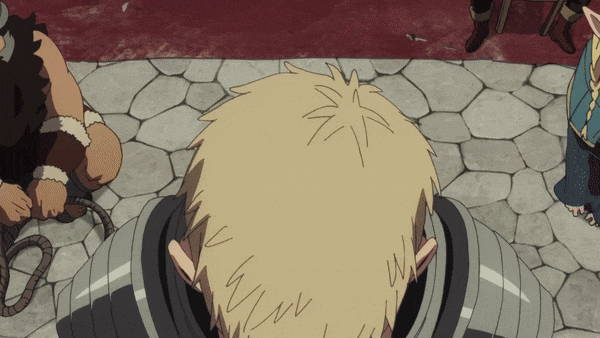
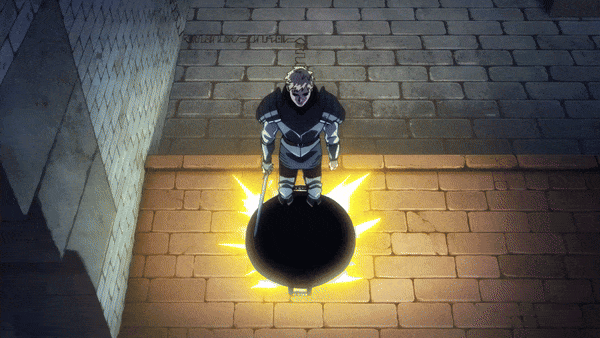
This was expanded from an excerpt from this video where I break down the whole episode, so if you want to continue wallowing in the sludge with me, consider checking out the video!
Thanks for reading.
youtube
#I feel like whenever I take an excerpt from my video scripts to turn into a post on here it ends up more fleshed out and over all better#because I have more time to think about it but also because I know some people on youtube will get mad if I talk about hands for 10 min XD#dungeon meshi#animation analysis#laios touden#marcille donato#mini essay#youtube#video#original#Youtube
662 notes
·
View notes
Text
Remember when I told you Disney wasn't going to "save you" from AI?
Megacorps like Disney have mountains of exclusive data they "own" that they can use to create their own internal, proprietary, AI systems. They have every sketch, development photo, unused concept art piece, cut scene, note, doodle, rotoscope/animation reference footage, every storyboard, merch design document, you name it.
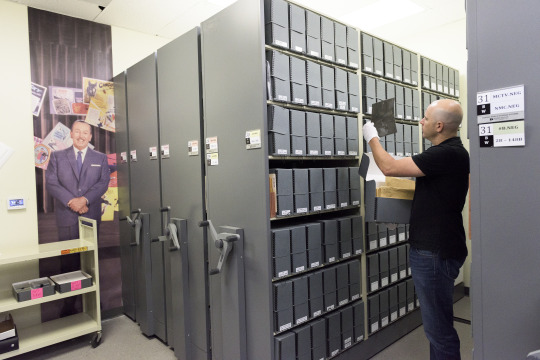
And that's on top of every single frame of every movie and TV show. Every panel of every comic.
That's why Disney supports the efforts to clamp down on AI for copyright reasons, because they own all the copyrights. They want that power in their hands. They do not want you to be able to use a cheap or free utility to compete with them. Along the way, they'll burn the entire concept of fair use to the ground and snatch the right to copyright styles. Adobe has confessed this intention, straight to congress.
When the lawyers come, you won't be accused of stealing from say, artist Stephen Silver. You'll be accused of stealing the style of Disney's Kim Possible(TM).
But don't listen to me. Listen to the Electronic Frontier Foundation.
3K notes
·
View notes
Text

I love practical effects.
I love that more directors are trying to incorporate practical effects.
But you do not want a 100% "practical" movie. Our standards are much too high. The stunts required for a modern Bond movie would be much too dangerous. You would not believe what some of the old Bond movies got away with in terms of stunt safety.
Like, they literally killed a guy.

The only 100% practical modern VFX movie was Oppenheimer.
And the dirty little secret is that Nolan used a loophole to say this.
He shot practical assets instead of creating them with computer modeling techniques.
Assets are individual elements that are combined with live photography during post production. They might be explosions. Or blood spatter. Smoke or water. They can be filmed against a green or black background. Or they can be created from scratch by a VFX artist. Nolan filmed all his assets in real life. So they were "practical."
Incorporating the assets is a process called compositing. It's basically like advanced photoshopping but with 24 frames per second instead of a still image. It's hard work that takes months. And often involves a lot of rotoscoping where you cut things out with a digital exacto knife. For heavy rotoscoping scenes, studios will sometimes hire a rotoscoping firm in India where they just cut things out all day. It is one of the most tedious processes in all of VFX. I have to do it in my photography work and I can barely stand a few hours at a time.
Anyway... Nolan hired 100 of the world's best compositors to take all of the practical footage of sparks and electricity and weird fluid and smoke setups and integrate it with the on-set footage. They probably used a lot of deep compositing which is not traditionally seen as "CGI" even though it is computer generated imagery. It allows artists to composite in a 3D space which helps elements look less like cardboard cutouts.
The work of these VFX wizards was downplayed and Nolan and the studio marketing bragged about how not a single frame of the movie was "fake." Despite the fact that hundreds of shots were heavily digitally altered.
The karma of it all was the nuclear bomb looking like a backyard gasoline explosion.
If he didn't hold himself to that ridiculous standard, he could have augmented the explosion with CGI and that scene would have had twice the impact. He could have still bragged about the insane lengths he had to go through to create practical assets. And he could have joked that the only reason he had to use CGI is because they wouldn't let him set off an actual atomic bomb.
123 notes
·
View notes
Text
figured i might post this slow down here too because i like seeing the individual frames!! and maybe y’all will too. i’m rotoscoping an axel from nikolaj memola (second jumping pass here) because he shares a similar physique to crowley and i don’t have to do much more work other than deciphering what his body parts are doing in the potato quality of this footage


it’s been a loonnngg time since i’ve done anything like this and i already see some stuff i need to go back and tweak but so far so good i think, maybe i will add color and a background if i feel up to it
180 notes
·
View notes
Note
I forget. What's rotoscoping?
animating over footage, like the sleeping ones used mewtwo sprites or over the smile/smash sprite







521 notes
·
View notes
Text
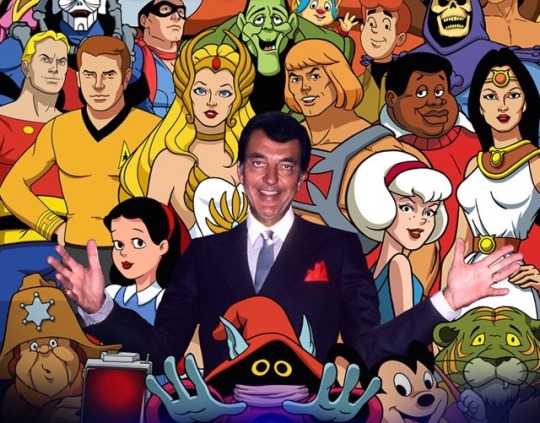
The Folks behind the Toons
Louis Scheimer
Born on October 19, 1928 in Pittsburgh, Pennsylvania, Louis Scheimer was a producer, voice actor and helped to found the Filmation animation studio. Scheimer grew up in Pittsburgh the son of Jewish immigrants from Germany. The family lore is that his father had to flee Germany in the early 1920's after he had punched his classmate, a young Adolf Hitler.
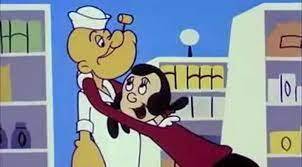
Following an education at Carnegie Mellon University, Scheimer landed a job at Larry Harmon Pictures. He was promoted to art director and worked on television cartoons of Popeye the Sailor and Bozo the Clown. Herein he became friends with former Disney animator, Hal Sutherland. After Harmon Pictures shuttered, Scheimer, Sutherland and former radio disc-jockey, Norm Prescott, formed their own studio calling it ‘Filmation.’ One of the studio's first projects was ‘The Journey Back to Oz,’ an animated sequel to The Wizard of Oz.

Filmation cultivated a number of means of reducing costs in creating animation. This included limiting the number of frames per second, re-using animated sequences, and rotoscoping (where animators trace over motion picture footage, frame by frame, to produce realistic action). These techniques sometimes diminished the quality of a number of the productions, yet did enable the fledgling studio to compete in a saturated market. Filmations’ low-ball pitches helped the studio secure a deal with DC Comics to produce a Superman animated series. The studio also produced an animated adaptation of Star Trek, along with cartoons based on Archie, Flash Gordon and Tarzan. For the higher profile projects like Star Trek and Archie, Filmation made concerted efforts to create higher quality productions.

Filmation was purchased by the Westinghouse Corporation in 1969. The studio continued to make content but Scheimer, Sutherland and Prescott were no longer in the driver’s seat.
In 1972, Scheimer teamed up with comedian Bill Cosby to produce an educational cartoon series featuring an exclusively Black cast of characters. They initially had trouble getting a network to bite on the project, but CBS ultimately took a chance and Fat Albert and the Cosby Kids would go on to become Filmation’s biggest hit and a landmark animated series.
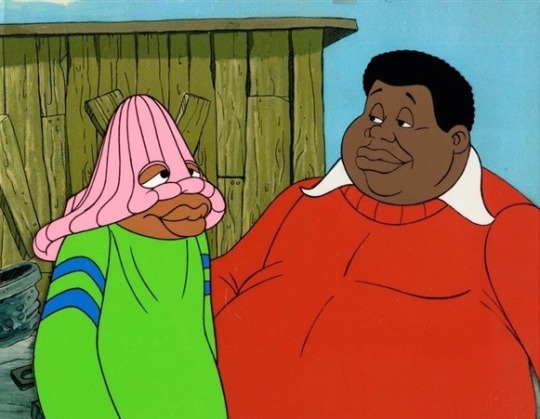
Along with co-producing Fat Albert, Scheimer additionally acted as part of the cast, voicing the characters of Dumb Donald and Legal Eagle. Scheimer would go on to provide voice work for numerous other animation projects throughout his career.
Additional cartoon produced by Filmation included The Adventures of Batman, The Hardy Boys, Sabrina and the Groovie Goolies, Lassie's Rescue Rangers, The New Adventures of Mighty Mouse, BlackStar, Ghostbuster and many others. The studio also ventured into live action programing with such shows as Shazam, Isis and the mixed live-action/cartoon series, The Adventures of Waldo Kitty.
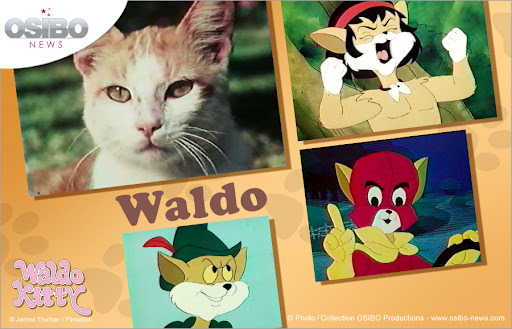
In 1980, Filmation partnered with Mattel Toys and produced He-Man and the Masters of The Universe. It proved to be one of the most popular animated shows of the 1980s and led to the sequel series, She-Ra: Princess of Power. Scheimer voiced Orko in He-Man as well as Grizzlor in She-Ra.

Filiation and Mattel later tried to replicate the success of He-Man/She-Ra with a show called Bravestarr that was also released in conjunction with a toy-line. Unfortunately, production delays and a lukewarm response to both the toys and the cartoon caused the project to bomb. The Filmation feature animated film, Happily Ever After, was also a financial disappointment and accrued significant legal bills in a lawsuit from Disney. All this led to Westinghouse shutting Filmation down in 1989 and selling its library to Paravision International.

Louis Scheimer went into semi-retirement, providing periodic consultation services to Gang of Seven Animation and Dreamweavers Studios. He was married to Joanne Wucher until her death in 2009. He passed away from complication from Parkinson’s Disease in 2013 at the age of 84. He is survived by two children.

21 notes
·
View notes
Text
I had to rotoscope something for class, so I turned it into Rogue
I took the footage from this video
youtube
Rogue could easily climb up the wall as a shadow, but you should also consider that the thought of drawing Sting's hair from multiple different angles is a nightmare.
#fairy tail#rogue cheney#fairy tail fanart#lilacharbour art#this took like 7 hours and it's only 5fps#could not imagine how long 12 fps would take lmao
24 notes
·
View notes
Note
hello hi, no disrespect intended, because like... i get it. i get /why/. but rotoscoping is NOT EASY, by any means. it seems like a bizarre caveat to fit the "no tracing" rules.
if you're revising the rules anyway, couldn't an exception be made for rotoscoping as long as you take your own footage?? you're already encouraging us to save wips to dissuade GenAI claims, so it makes sense that you have to have your video ready to show??
We recognize that rotoscoping is a valid form of animation, though at the moment it is difficult to allow it due to conflicts with our policies. Although we are in the process of reworking rules and filter guidelines, we have decided against reworking attack categorizations this year due to limited time, as was stated in the last newspost.

To answer this ask: we are not allowing rotoscoping at this time, no matter the source. Allowing footage of your own brings up many concerns. Namely, how can we know for sure that the video submitted as proof is theirs? Would it put users in an uncomfortable state to show that proof? What about videos made by minors, that feature minors (as we do not allow minors to show their faces on the site)?
We may re-evaluate it in the future, as it would need its own category or rating system. As previously mentioned, we do not have the time or resources to adjust ratings for 2024's event. I can certainly make a note to discuss rotoscoping when we do adjust ratings, though! Thank you for understanding.
61 notes
·
View notes
Text
Jackie Shane, the black transgender R&B icon

Any Other Way: The Jackie Shane Story is a documentary by Michael Mabbott and Lucah Rosenberg-Lee, focusing on the life of Jackie Shane, a Black, openly trans R&B singer from the 1960s.
The filmmakers faced challenges due to limited footage of Shane, using live albums and phone conversations to recreate her story with Black trans actors and rotoscope animation.
The film highlights themes of overcoming fear and the erasure of trans history, showcasing Shane’s strength and musical talent.
IN Magazine has more.
See also: Trailblazing Black trans singer Jackie Shane finally gets her due in Tennessee
youtube
Here's Jackie Shane singing Walking the Dog back in 1965.
youtube
35 notes
·
View notes
Text
Wanted to animate today, didn't have the energy to do it from scratch, so I took some reference footage and did some really loose rotoscoping. Pls enjoy Ikamo with the current vibes (these are always his vibes)
#asharts#animation#rotoscope#ikamo#space squad#its been a rough few days yall#but we will endure#pls know that my spaces will always be queer and immigrant friendly#even if I am not so loud about it
27 notes
·
View notes
Text
Sooooo uncanny rotoscope animation where Puzzles head blips outta existence and it’s just an outline of a vaguely human shaped figure dancing huh? Average Puzzle behavior this is completely normal (I’m coping so hard right now and sobbing into a pillow)
I think the reason I gave up on this one is because tracing my own dance footage was so repetitive and felt like I wasn’t getting the creative reward I wanted from the work. Would’ve saved my time if I just made a Puzzle cosplay and did the dance because WOW animating dancing takes so much patience which I am completely drained of!!
Also another reason for abandoning it was because erm first time ever doing rotoscope and I immediately realized just how off/inaccurate all the body proportions would be. I started thinking I’d need to retrace it all over again in order to properly adjust each frame to match Puzzles outline accurately aaand pushing that reset button/doing everything all over again scared me lol. I should’ve just referenced the dance poses rather then copying everything the exact same. Plus I’m too short to act as Puzzles. Thus it was doomed from the start <<
#once again Puzzles is such a mood in this one#‘patience is a virtue good things come to those who wait’ I COULDN’T KEEP CARRYING ON THIS PROJECT WITHOUT IMMEDIATE GRATIFICATION/REWARD 😣#I know the entire point of being an animator is taking small steps each day—breaking apart the workload so the pressure doesn’t get to you#BUT COME ONNNN MY PATIENCE CAN ONLY GO SO FAR AUUUU#I’m still my biggest hater and this will always be the case jksjsp#hplonesome art#creative control dance#mr puzzles dancing#(wow ‘mr puzzles dancing’ is incredibly generous given how I barely even outlined his TV head I’m—)#(*throws myself into lava*)
16 notes
·
View notes
Text




It makes me sad how much art we miss out on because we don't have a universal basic income. It wouldn't matter if artists suck or if they are getting better or if they are amazing. They would have the opportunity to try and see where they land on that spectrum. And we won't miss out on the next Spielberg because they couldn't afford rent and decided to go into real estate.
This person is under the impression that all good art is properly valued. And I assure you, that is rarely true. People would rather generate shiny A.I. shit with 12 fingers than pay a talented artist.
"Get good" is not a solution.
And I really don't know what to do about the Fiver thing. Artists in India deserve work and good wages just as much as I do, but I cannot compete with the prices they offer, so I just don't even try. Rotoscope artists are having similar issues as there are companies in India basically setting up rotoscope farms where you just have a building full of people cutting people out of green screen footage for what we would consider minimum wage in the US.
128 notes
·
View notes
Text
I was rewatching the Ralph Bakshi Lord of the Rings cartoon movie for the first time in many years and I forgot how Stoney Baloney this movie was! I realize that they basically ran out of money and had to use all the rotoscope footage they had which is why the story moves along so jarringly quick. There’s a whole 12 minute chase scene where it’s basically horse dressage while Frodo tries to get away. But this is it! This is how I fell in love with orcs! I saw these guys in this and the Hobbit cartoon and it rocked my world. Who were these fanged and tusked guys and where can I find more!? Luckily it was the early-ish 1990’s and I would soon be provided so much to work with as Magic the Gathering, Warcraft: Orcs and Humans, and my discovery of Warhammer Fantasy Battles would happen soon in quick succession not to mention that these movies would be remade by Peter Jackson as the new millennium rolled in. What a movie! What a legacy! What an impact on my life!


#lord of the rings#miniatures#warhammer fantasy#warhammer the old world#fantasy#orcs#orcs and goblins#the hobbit#middle earth#ralph bakshi
13 notes
·
View notes